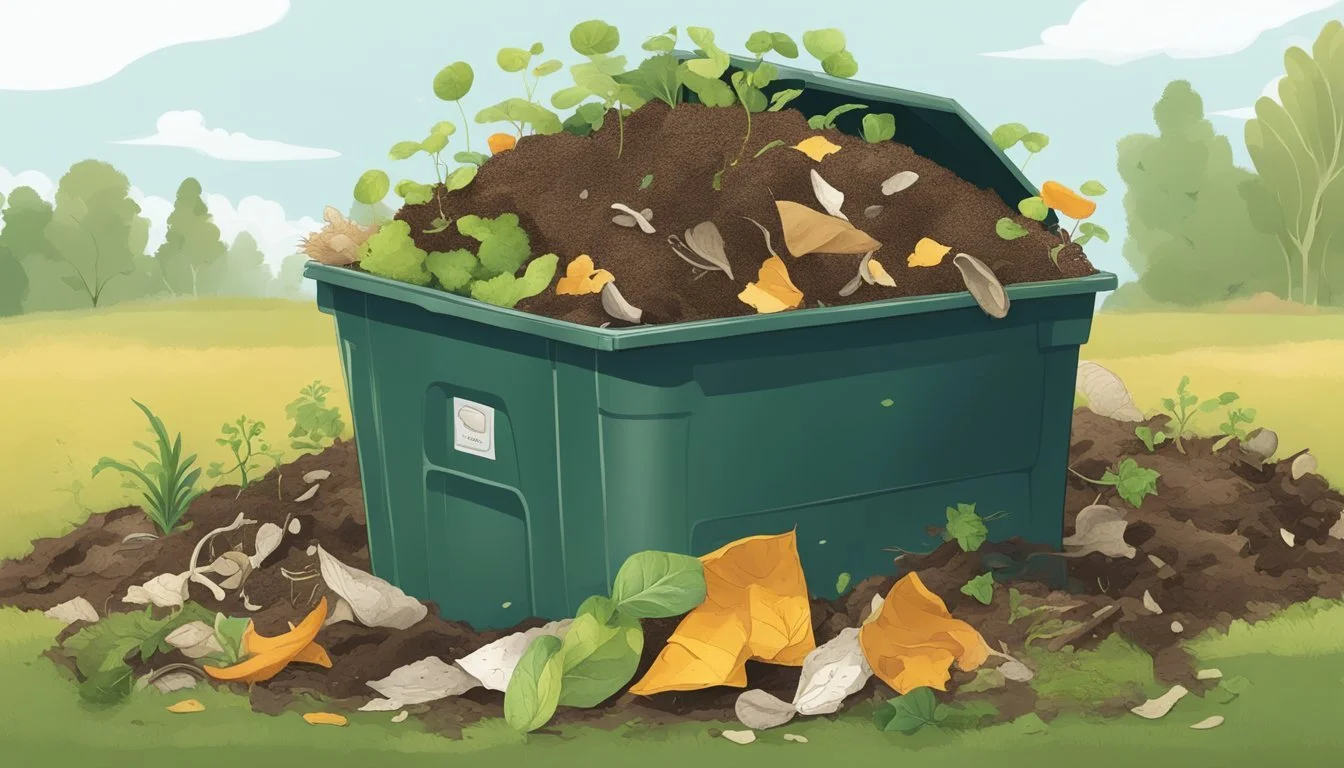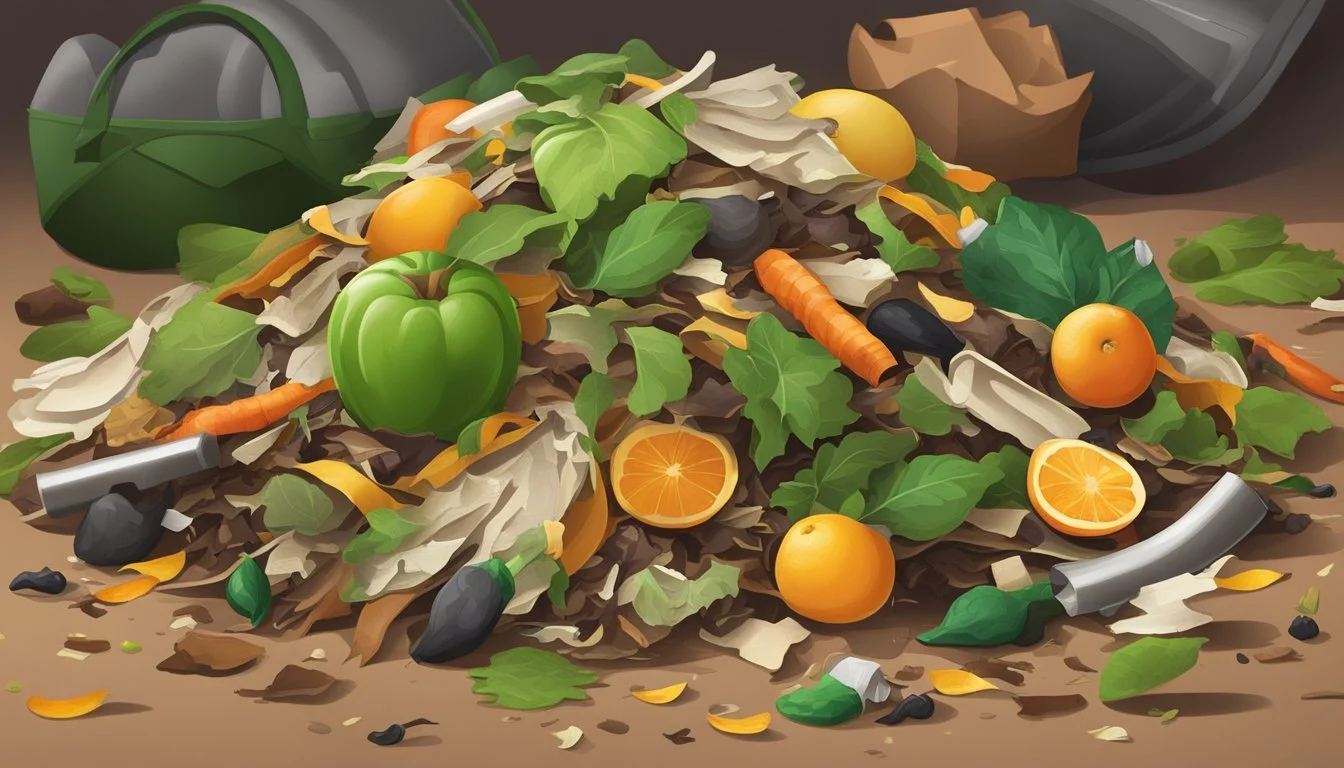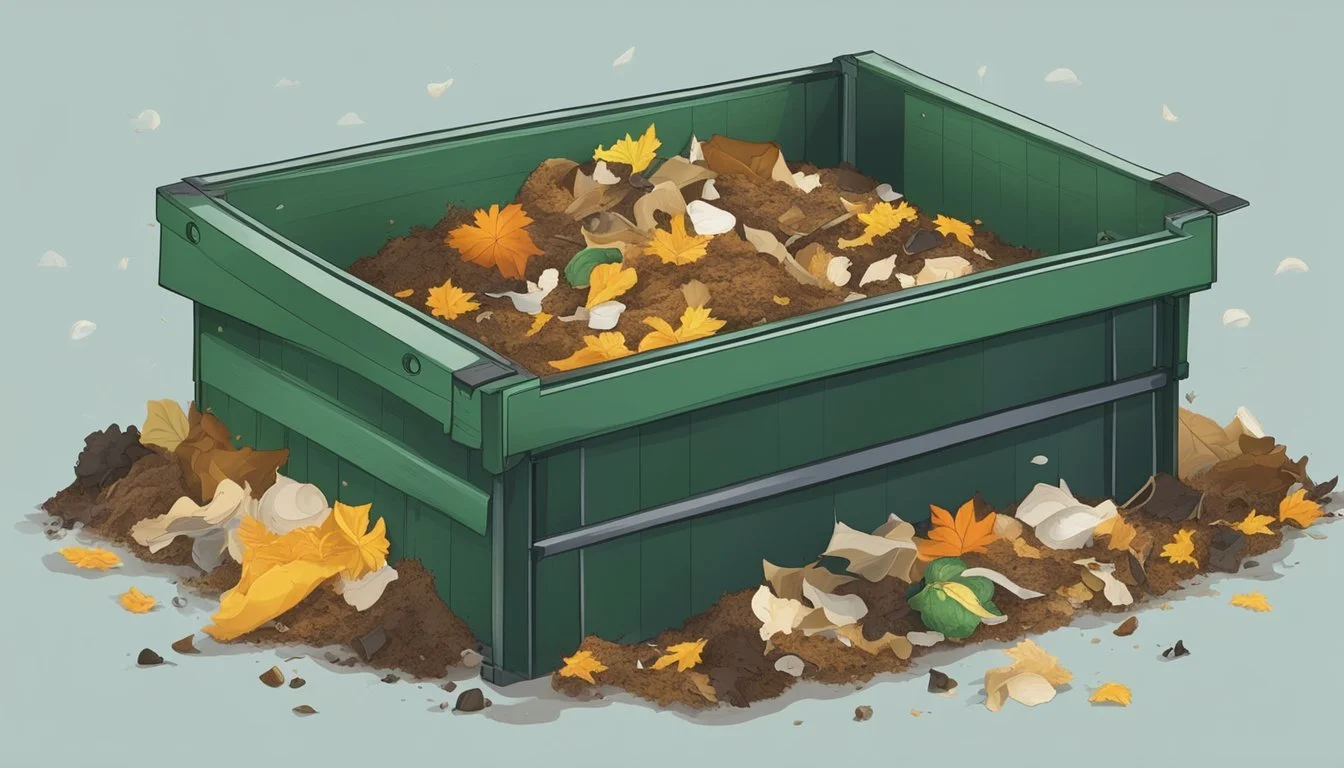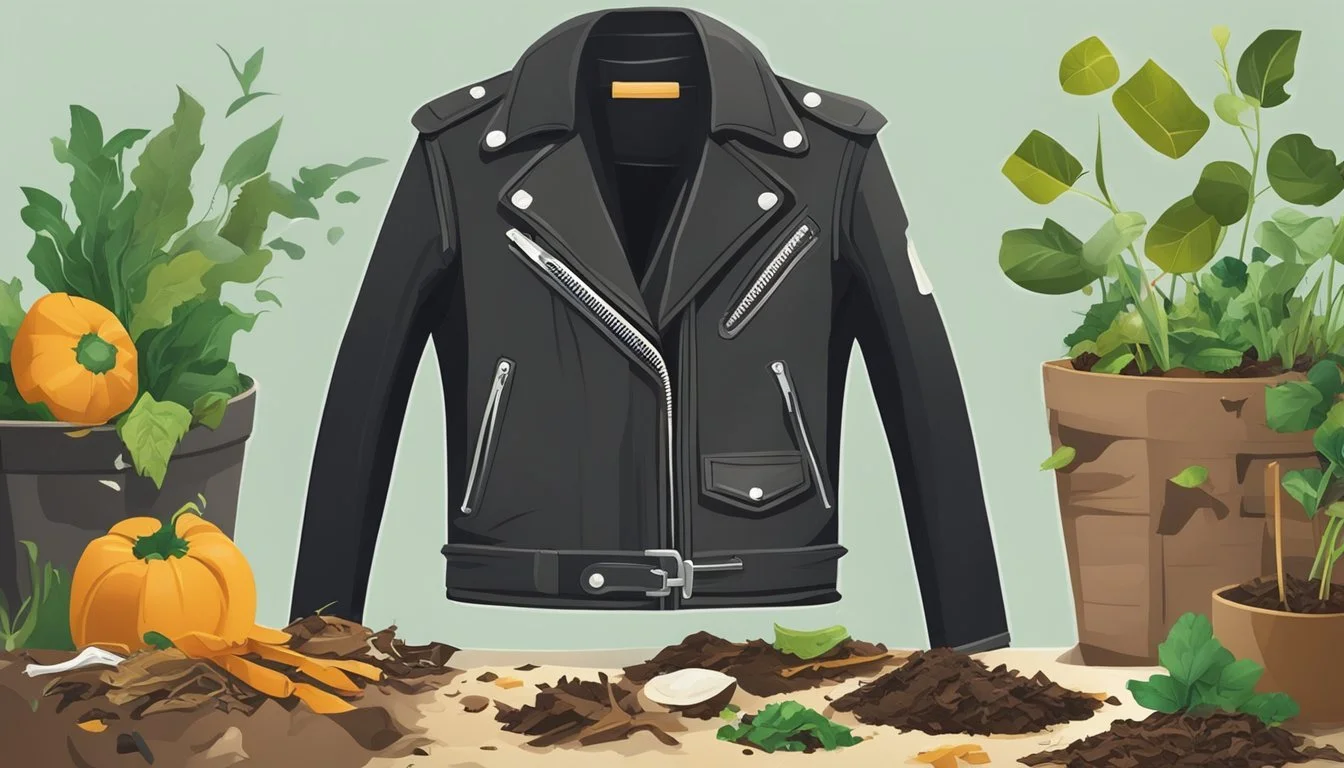Can You Compost Leather?
Debunking Myths & Facts
Composting is a method of converting organic waste into nutrient-rich soil amendments, but when it comes to materials like leather, many people are unsure whether it belongs in the compost bin. Leather is a natural material, which in theory, could decompose. However, the process of leather production often includes various treatments with chemicals that can complicate its breakdown, raising concerns about its composting feasibility and the potential impact on the compost quality.
The compostability of leather depends on several factors, including the type of leather and how it has been treated during processing. Traditional leather goes through a tanning process involving chemicals that may not break down easily in a home composting system. Furthermore, these chemicals could potentially contaminate the resulting compost. In contrast, untreated, or less-processed leathers might offer better prospects for decomposition when managed correctly.
Before adding leather scraps to compost, it's important to consider the balance of materials in the compost pile. Leather is rich in nitrogen, an essential element for the microorganisms at work in compost. It could help in the provision of proteins that aid the composting process. However, due to its density and chemical treatment, leather should be added in moderation and may require a longer time frame to decompose compared to other organic matter.
Understanding Composting Basics
Composting is a methodical process that transforms organic matter into nutrient-rich soil additive, called compost, through decomposition. This section will delineate the fundamentals of what composting entails, the process it encompasses, and the essential elements for a successful composting operation.
What Is Compost?
Compost is the end result of the composting process, a dark, crumbly, and earthy-smelling material. It is produced when organic matter, ranging from kitchen scraps to yard waste, breaks down into simpler substances. This process recycles various organic materials otherwise regarded as waste, providing a substrate that enriches soil and reduces the need for chemical fertilizers.
The Composting Process
Composting is a natural method involving microorganisms such as bacteria and fungi, along with earthworms and other detritivores, that break down the organic matter. The process is facilitated by heat and moisture, which accelerate microbial activity. For optimum decomposition, maintaining a balance between carbon-rich 'brown' materials and nitrogen-rich 'green' materials is crucial.
Carbon (Brown): Provides energy for microorganisms. Examples include dried leaves, branches, and paper.
Nitrogen (Green): Supplies protein for microbe growth. Examples encompass food scraps, coffee grounds, and grass clippings.
The decomposition is aerobically driven, meaning oxygen is a vital component that should be amply supplied by turning the pile periodically.
Key Components of a Healthy Compost Pile
A healthy compost pile necessitates a blend of green and brown materials, adequate moisture, and proper aeration. It should generally consist of roughly equal portions of greens and browns by volume:
Greens: Provide nitrogen — essential for microorganism proliferation.
Browns: Supply carbon — acts as an energy source for the decomposition process.
Water: The pile should be moist but not sodden, as excessive water can smother the microbes.
Correct balance:
Component Purpose Ideal Ratio by Volume Greens Nitrogen source 1 part Browns Carbon source 1 part Water Moisture As needed to sustain dampness, avoid waterlogging
Adequate aeration is achieved by turning the pile, which not only oxygenates the compost but also redistributes the inner and outer materials, encouraging an even break down.
By understanding these basic principles, one can effectively create and maintain a compost system that recycles waste into a valuable resource for garden and soil health.
Leather and Composting
Leather, being a product of natural origin, may lead to the assumption that it is fully biodegradable and thus suitable for composting. This section delves into the nuances of whether leather can be incorporated into compost, the factors that affect its breakdown, and its overall behavior in compost environments.
Can Leather Be Composted?
Leather composting is a subject that is not straightforward. Leather can be composted, but it is contingent upon several variables. Due to its tough, resilient nature and often chemical-laden processing, leather does not break down as effortlessly as other organic materials like fruit peels or leaves. Therefore, adding leather to a compost pile is possible, but one should expect a significantly longer decomposition time.
Factors Affecting Leather Decomposition
Various factors influence the decomposition of leather in compost:
Chemical Treatments: Leather typically undergoes a tanning process involving chemicals, some of which might be harmful if released into the environment. These treatments can hinder microbial activity, thereby slowing down decomposition.
Physical Characteristics: Thick, dense leather will take longer to break down than thinner, softer varieties. Cutting or shredding leather into smaller pieces can expedite decomposition.
Compost Conditions: The presence of adequate warmth, moisture, and microbial activity are essential for composting leather. A balance with other compost materials - nitrogen-rich 'greens' and carbon-rich 'browns' - is also key.
Nature of Leather in Composting
Leather is an animal by-product consisting of natural fibers but treated with dyes and chemicals; this complex composition gives leather unique properties but complicates its integration into a compost system. In a compost pile, leather behaves differently than most natural compostable items since it contains both organic and inorganic components. While the organic materials in leather gradually break down, the inorganic elements such as metal shavings from the tanning process or synthetic dyes may persist, potentially affecting the compost quality and the environment.
Compost Composition and Leather
In composting, understanding what can and cannot be included is crucial for a healthy compost pile, especially when considering challenging items like leather.
Organic Items in a Compost Pile
A compost pile thrives on a balance of carbon-rich "brown" items and nitrogen-rich "green" items. Brown items typically consist of materials such as:
Newspaper
Straw
Sawdust
Wood chips
Dry leaves
Pine needles
Green items are usually:
Fruit and vegetable scraps
Coffee grounds and filters
Tea bags
Grass clippings
Flowers
Manure (excluding cat and dog droppings)
These items decompose effectively, creating a nutrient-rich fertilizer that can be used to enrich soil.
Items to Exclude from Compost
Certain items are best left out of the compost bin to prevent contamination or pests:
Diseased plants or weeds that could spread
Meat, dairy, and oily foods which can attract pests and cause odor
Bread and rice which can mold and attract pests
Coal or charcoal ash which can contain harmful substances
When it comes to leather, its compostability is questionable. Leather often contains metal, oils, dyes, and tanning agents which can introduce toxins into the compost. While some softer leathers may break down over time under ideal conditions, they generally do not decompose as efficiently or safely as other organic materials. Therefore, it is advised to keep leather out of the compost pile to maintain the integrity and safety of the compost produced.
Environmental Impact
When assessing the environmental impact of composting leather, one should consider the benefits of diverting leather waste from landfills as well as the potential negative consequences of introducing certain chemicals to compost.
Benefits of Composting
Composting leather can have a substantial positive effect on the environment. By adding leather to compost, one is participating in circular waste management, transforming a would-be waste product into beneficial fertilizer. This process can reduce landfill waste and the associated greenhouse gas emissions, particularly methane, a potent contributor to global climate change. As leather decomposes, it can enhance soil quality by contributing valuable organic matter, which improves soil structure, water retention, and nutrient content.
Potential Negative Effects of Composting
However, not all leather composting is created equal. The decomposition of leather in compost depends on whether the leather is treated or untreated. Traditional leather is often treated with chemicals and heavy metals that can contaminate the compost and the environment. Here are key concerns:
Chemical Contamination: Leather treated with pesticides and tanning compounds can introduce harmful substances into the compost, which may then be taken up by plants or affect water quality.
Slow Decomposition: Treated leather breaks down more slowly than organic materials due to the presence of preservatives, which might disrupt the composting process.
Water Usage: The leather industry is water-intensive, and composting leather doesn’t alleviate the initial environmental cost of its production.
To ensure environmental safety, one should only compost leather that has been certified organic or untreated to avoid these potential issues.
Practical Tips for Composting Leather
When composting leather, it's important to prepare it properly and maintain the right balance in your compost bin to ensure an environmentally friendly breakdown process.
Preparing Leather for Composting
To help leather break down more effectively in a compost environment, one should take several preliminary steps:
Chop or shred the leather scraps: Smaller pieces decompose faster.
Ensure the leather is untreated: Avoid leather treated with toxic chemicals as they can contaminate the compost.
Pre-composting hydration: Soaking leather in water for a couple of days prior may hasten decomposition.
Maintaining the Compost Balance
A successful composting process relies on the right balance of green (nitrogen-rich) and brown (carbon-rich) materials:
Ratio: Maintain a carbon to nitrogen ratio of about 30:1 in your compost bin. For leather, which is high in nitrogen, add more carbon-rich material to balance.
Aeration: Turn the compost regularly to provide oxygen that aids in the breakdown of organic materials, including leather.
Moisture: The compost should be as damp as a wrung-out sponge to facilitate the decomposition of leather scraps.
Conclusion
When considering the compostability of leather, one must be mindful of the material's origin and treatment. Leather products vary widely depending on the chemicals used during tanning and finishing processes. For example, traditionally tanned leather, often laden with chemicals, is less suitable for composting due to the risk of contaminating the compost with hazardous substances.
In contrast, untreated or vegetable-tanned leather scraps may decompose in compost given the right conditions, which include:
Sufficient time for breakdown
Adequate microbial activity
Optimal moisture and aeration levels
It's noteworthy that leather composting at home is a slow process, taking significantly longer compared to other organic materials. The breakdown period can span several months to years depending on the composting environment and the size and thickness of the leather scraps.
Professionals in waste management have developed methods to recycle and repurpose leather waste, such as mechanical and chemical breakdown into fibers or pulp. This is used for the creation of new products, underscoring the potential for leather to be sustainably disposed of beyond traditional composting approaches.
To summarize, composting leather is potentially feasible but should be approached with caution. Leather should be free from harmful chemicals and might require an extended timeframe to decompose completely. Composters should also consider environmental safety and the quality of the resulting compost when adding leather to their compost bins.








